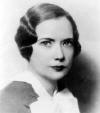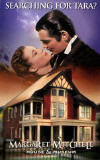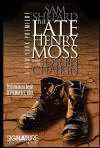The AAP reported their monthly industry sales statistics for September, including eBook sales compiled from 12 publishers (including the big six). They show sales for the month of $39.9 million, ahead of August's $39 million, but behind July's $40.8 million. (Insiders warn not to make too much of the accuracy surrounding these monthly numbers, based upon how data is accumulated by publishers).
With total trade print sales of $489.5 million for September, that makes eBooks 7.5 percent of sales overall for the month. The total of $304.6 million in sales for the year so far comprises 8.2 percent of total trade sales of $3.705 billion, as recorded by the AAP.
With last month's announcement of Nook Color and Nook Kids, along with a wave of other initiatives aimed at ramping up the children's market, we were interested in where the children's eBook market is now--and what percentage of adult sales (rather than overall sales) have shifted to eBooks.
Based on percentage breakdowns supplied to by many reporting AAP publishers, in September adult eBooks comprised 9.5 percent of all adult trade title sales. Children's eBooks, on the other hand, comprised only 1.6 percent of all children's trade sales.
Overall print trade sales for the year are down 7.5 percent (or $276 million) through September, compared to a year ago. Inclusive of eBooks, however, the trade market is down a more modest 2 percent.
With total trade print sales of $489.5 million for September, that makes eBooks 7.5 percent of sales overall for the month. The total of $304.6 million in sales for the year so far comprises 8.2 percent of total trade sales of $3.705 billion, as recorded by the AAP.
With last month's announcement of Nook Color and Nook Kids, along with a wave of other initiatives aimed at ramping up the children's market, we were interested in where the children's eBook market is now--and what percentage of adult sales (rather than overall sales) have shifted to eBooks.
Based on percentage breakdowns supplied to by many reporting AAP publishers, in September adult eBooks comprised 9.5 percent of all adult trade title sales. Children's eBooks, on the other hand, comprised only 1.6 percent of all children's trade sales.
Overall print trade sales for the year are down 7.5 percent (or $276 million) through September, compared to a year ago. Inclusive of eBooks, however, the trade market is down a more modest 2 percent.













